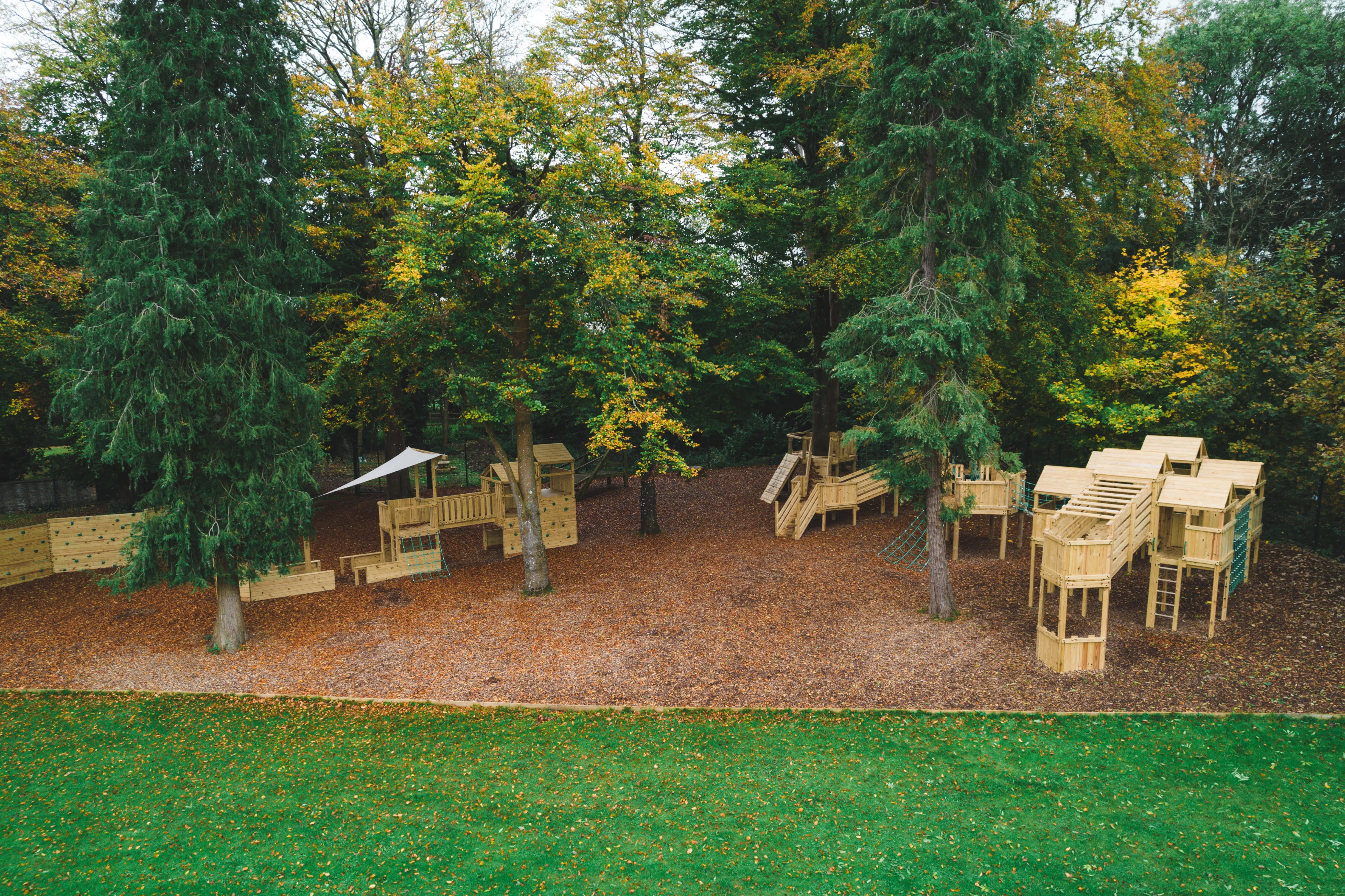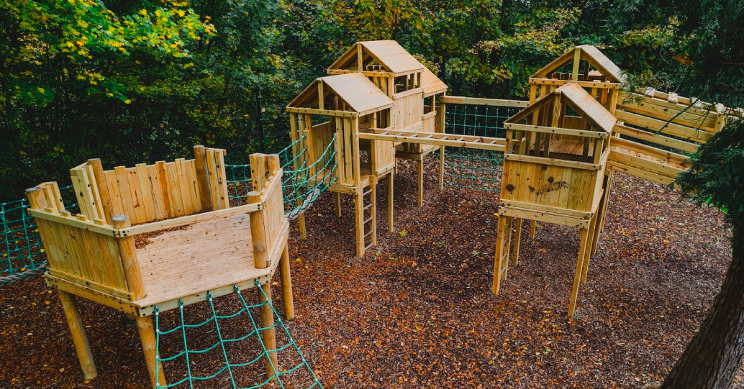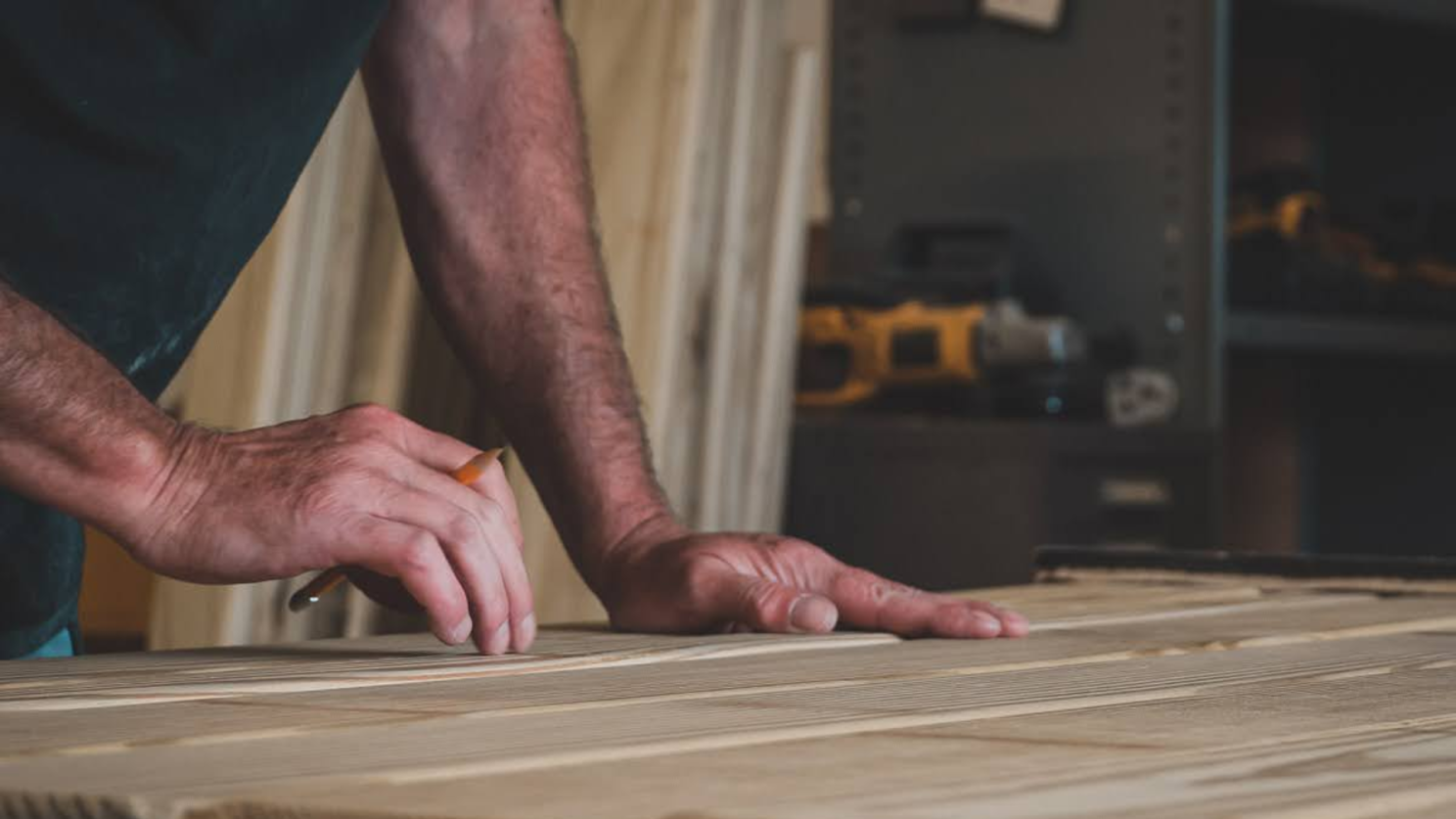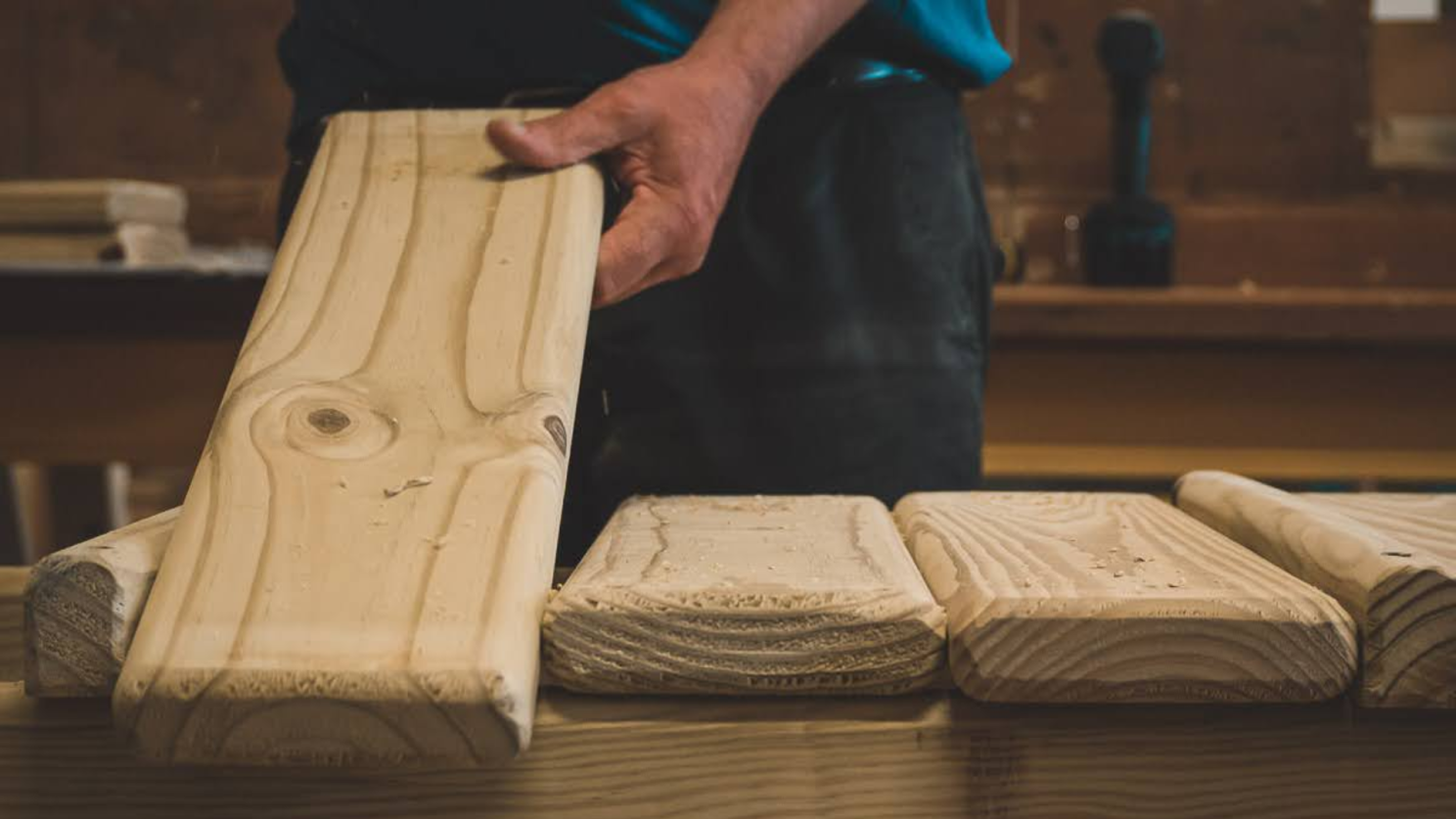
Have you ever wondered just how green timber really is? We're not talking about the colour of the wood, but rather the environmental impact of using timber compared to other materials. It's a fair question in today's world where debates rage about the damage we all do to the planet with things like air travel, fast fashion, and more...
We aren’t going to dive into the philosophical debate about whether playgrounds are an absolute necessity (we believe they are, for many good reasons). We've already talked about the benefits of outdoor play equipment for kids in another blog post. Instead, let's focus on how we can create playground equipment that's great for kids and easy on the planet.

So, let's explore the three main materials we use within our industry:
1. Plastic 2. Steel 3. Wood
1. Plastic has taken a bit of a hit in the environmental arena lately with issues like microplastics on everyone's minds, but there's no denying that it's fantastic for certain uses. We use plastic for our swings, slides, colourful play panels, and more. Naturally, to support in our efforts towards sustainability, we have made the shift to using reclaimed plastic (made from recycled bottles) to aid this cause.
2. Steel has always been a classic choice for playgrounds. It's strong, durable, easy to work with, and you can find it everywhere. But, here's the catch — mining and smelting steel does come with a hefty carbon footprint so we use it sparingly (nuts, bolts, screws etc). It also looks very unnatural in our opinion...
3. Now, let's talk about wood, it's a natural product, it looks, feels and smells great. Timber, like ours, can be sourced from Forest Stewardship Council (FSC) managed forests; that means that for every tree that is cut down more trees are planted to sustain the forest. Also, trees are the planet's carbon trappers, they suck up CO2 as they grow and release it when they burn or rot and the process repeats. As such, harvesting and replanting timber is a carbon neutral practice. However, using wood for playgrounds (or outdoor furniture, and such) does require a couple more steps, like kiln drying and treatment to prevent rot, but the finished product is then of greater utility and last for years to come. So, in the grand scheme of things, wood is pretty environmentally friendly.

"Now, what about the longevity of these materials and what happens when they're all used up?" — I hear you say.
1. Plastic has a decent shelf life but it degrades over time, losing colour and turning brittle from the sunlight. Plus, figuring out how to dispose or recycle of it is still a bit tricky. Microplastics are a serious concern and one currently without a permanent solution.
2. Steel can rust, unless it's stainless, but with proper care and a fresh coat of paint, it can last a long time. Though if you don’t take care of it, it will tarnish especially in wet weather. When it comes to recycling steel, there's a good system in place, it can be smelted down and made new again, so it doesn't pose a major problem in this regard.
3. Wood, well, it rots over time, yes. But, with some good preservatives, you can stretch its lifespan to approx. 15-20 years or more depending on it's environment. (That’s why our commercial guarantee covers timber for 20 years against rot and/or insect attack on all timber components). When the timbers are done, it's usually burned, which releases CO2 back into the air. The upside is that it can be used to heat homes, offices, factories, and more, so it's not a wasted resource. The key takeaway here is wood is a replenish-able resource, a carbon neutral resource, and most importantLY not a wasted resource when it's disposed of.

Many people, unfortunately, have it in their minds that harvesting trees immediately equates to the destruction and deforestation of forests, however, this couldn't be a greater far-cry from the truth. Sustainable practices, like ours, with FSC certified lumber is a clear choice, in our minds, when it comes to creating playgrounds.
So, that's why, if it wasn't obvious enough, we're team timber! And, of course sometimes, you need a bit of plastic and, some steel for certain things and we’re always looking for new ways and methods to improve our impact and footprint. But when it comes to our core creations, we're sticking with wood. We love that natural look and feel, and we hope you do too, but more importantly we love that it’s a sustainable resource with a carbon neutral output and isn't wasted once its finished it's shelf life.